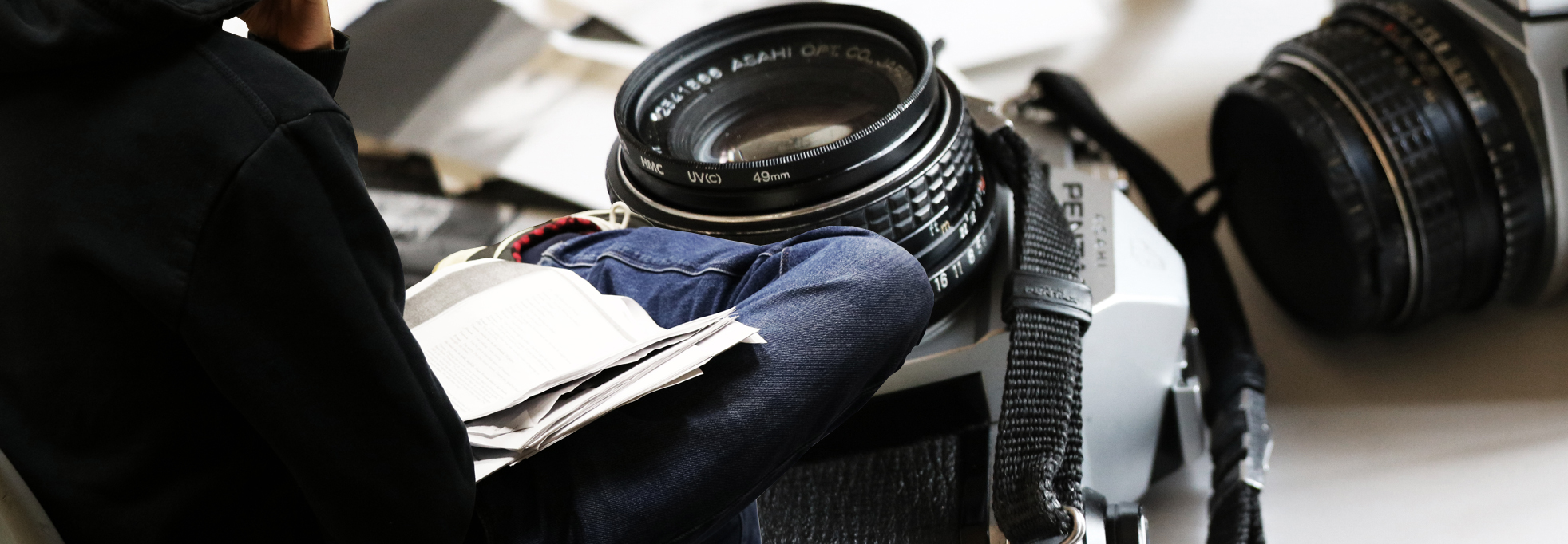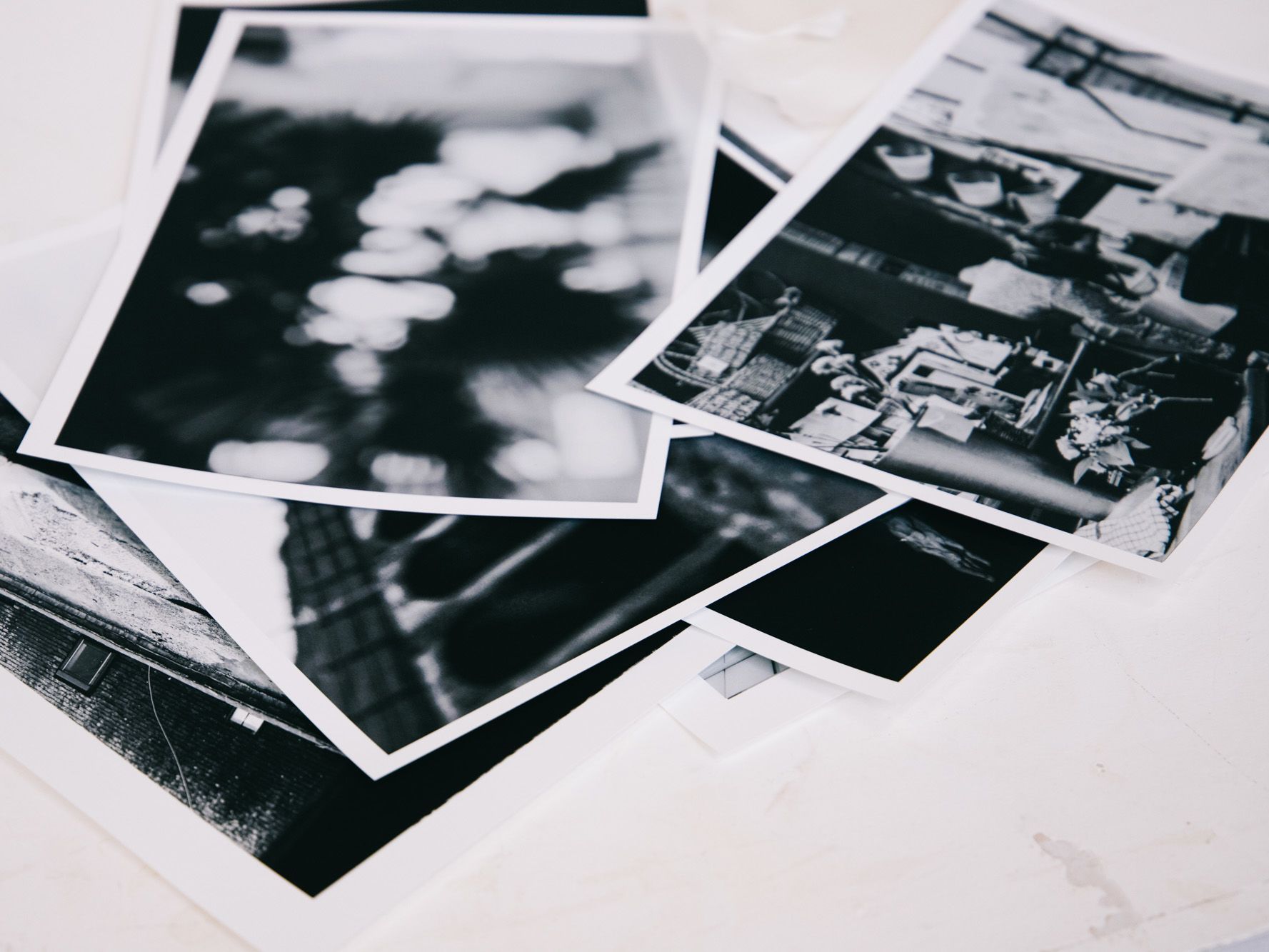Looking to stay active, creative and engaged during these strange times? We’ve got the perfect solution! Reaching out to our amazing tutors, they’ve shared some fab resources for you to follow, read, listen, watch and do whilst at home.
Starting with filmmaker, producer and tutor, Mark Aitken, Mark teaches Ideas for Successful Photography and Film and Fine Art. Here is Mark’s photography and scriptwriting recommendations to help you start and keep busy during these unusual times.

Mark Aitken
FOLLOW
To help with your photography ideas, Mark suggests following the hashtag #massisolationformat.
READ
For photography check out Photomonitor’s review of Mark’s Sanctum Ephemeral and interview. Mark also recommends looking up...
- Charlotte Cotton - The Photograph As Contemporary Art
- Geoff Dyer - The Ongoing Moment
- William Eggleston - William Eggleston's Guide
For scriptwriters, polkadots on raindrops has a "storytelling for film making" resource available, devised by Mark, on how to use existing film to create new ideas. Mark also recommends looking up...
- Dara Marks - Inside Story, The Power Of The Transformational Arc
LISTEN
For photographers, “There Then, Hear Now - The Sound of Photography” is the acclaimed radio show broadcast on Resonance FM, by Mark. Words, music, field recordings, atmospheres are all evoked by images, Hearing is another way of seeing.
For scriptwriters, in “The Peregrine” David Attenborough reads from J.A. Baker's British nature writing classic which was published over fifty years ago to critical acclaim. Written in the form of a diary, it covers seven months from autumn to spring and charts Baker's observations of this extraordinary predator.
WATCH
For photographers, you hear artists talk about their work on The Photographers' Gallery, and Format has a great festival archive to explore.
For scriptwriters, arguably one of the greatest living filmmakers, who battled Klaus Kinski on the set of Aguirre, Wrath Of God, dragged a ship over a hill for Fitzcarraldo and famously ate his own shoe on film after a losing bet, came to Doc/Fest 2019 to discuss his acclaimed career with broadcaster Edith Bowman. Watch a conversation with Werner Herzog.
DO (photography task)
- Take a very familiar object in your house and photograph it so that it becomes unfamiliar.
- Take a portrait of someone (or yourself) without seeing their face.
- Take a picture of something that you can’t see - something that is absent.
- Select a photograph of your own that you’re most proud of. Now consider the theme of the picture - what is it about? What is the essence? The feeling? And what is there of you in this picture? Now ask someone else the same questions about the picture and see how their answers relate to yours.
- And finally, take between five and ten pictures inspired by The Current, a poem by Raymond Carver. Arrange them in a sequence and see if a visual poem arises. You might end up with something completely different to the poem and of course, you don’t need to take pictures of fish and water.
DO (scriptwriting task)
Using a film as a template for storytelling - first, watch the following short film, Ekki Múkk.
- Can you name the protagonist and the consequently, all the antagonists and antagonistic factors?
- You may be familiar with the storytelling archetypes in the film. Can you name any and say what they represent?
- Consider characters and locations and how they function in the story. For example, what does the forest represent and what is the role of the fox in relation to the protagonist.
- Now consider emotion in the film. Emotion is equivalent to theme. It’s different to story and normally can be named in one or two words. What is the film about?
- What is the question at the start of the film and how is it answered at the end? This normally relates to the protagonist and the problems they face.
Okay, those questions should help you think about the film in a deeper way.
- Now break the film down into scenes and think of each scene as a paragraph of prose that reads as actions - what happens. Man walks into a field. He’s lost. He meets a snail, etc.
- Next, I would like you to change the location of the story. When doing so, you’ll see how many details change - for instance in a big city, a forest may become a dense housing estate and the fox may become a different feared beast.
- Rewrite the film as scenes in prose paragraphs in no more than one page. You’ll notice how quickly the story changes and becomes your own creation.
You’ve now used Ekki Múkk as a template. It’s full of archetypes and is only original in the sense of how those archetypes have been arranged. Your new arrangement is your own original creation. If your story becomes too complicated then you’ve made too many changes and you should go back to your template (the film) to be reminded of the story’s components.


